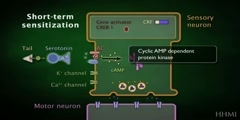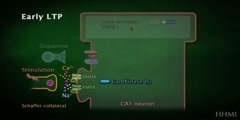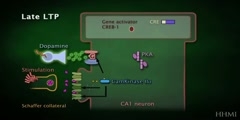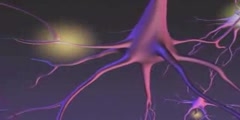How the Body Works : Center of Emotion and Memory
How the Body Works Center of Emotion and Memory The limbic system, which is concerned with memory and learning, is also believed to be primarily involved in emotional responses. Emotions are the conscious result of the interaction between the activities of the cerebral cortex, the limbic system and the visceral organs of the body which produce specific physical changes. A number of theories have been postulated to explain this relationship between the body and mind. The emotional responses of any individual are, however, also a product of his knowledge and experience. The anatomy of the limbic system includes: The amygdaloid bodies, which contain both incoming and outgoing nerve fibers, and may help to regulate emotions, particularly agression. The fornix, a thick bundle of nerve fibers which forms the outgoing pathway from the hippocampus. The afferent fibers bring impulses into the dentate gyrus and the area of Ammon's horn. The dentate gyrus which lies within the hippocampal sulcus and although its function is not fully understood may relay impulses in the hippocampus. The subiculum is a region of cortex composed of up to six different cell layers and a multitude of nerve pathways. Ammon's horn, which merges with the subiculum and contains ovoid and pyramidal cells, the function of which are thought to be associated with memory. The efferent fibers, which carry information out from Ammon's horn to other regions of the brain. The hippocampus, which is composed of folded layers of cells and fibers and is associated with emotions, learning and short-term memory. The parahippocampal gyrus, a highly specialized area of nerve cells concerned with memory pathways. The mammillary bodies, which have incoming and outgoing nerve fibers and acts as a relay station between the limbic system and the brain. ...and the septum pelucidum, which links the amygdala with the hypothalamus and is believed to be concerned with pleasure reactions.














